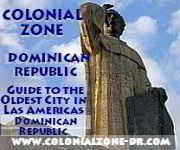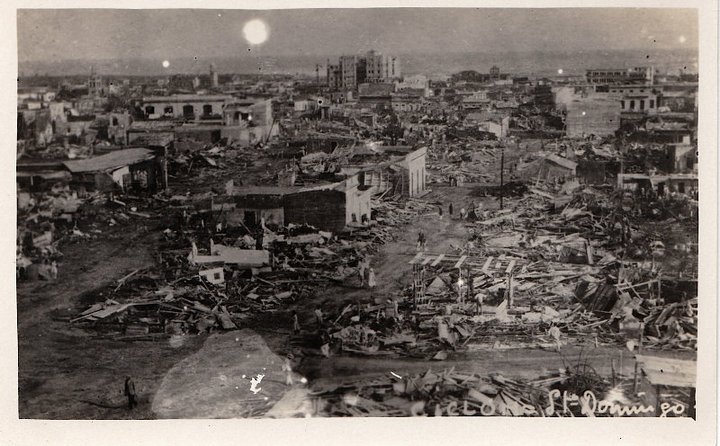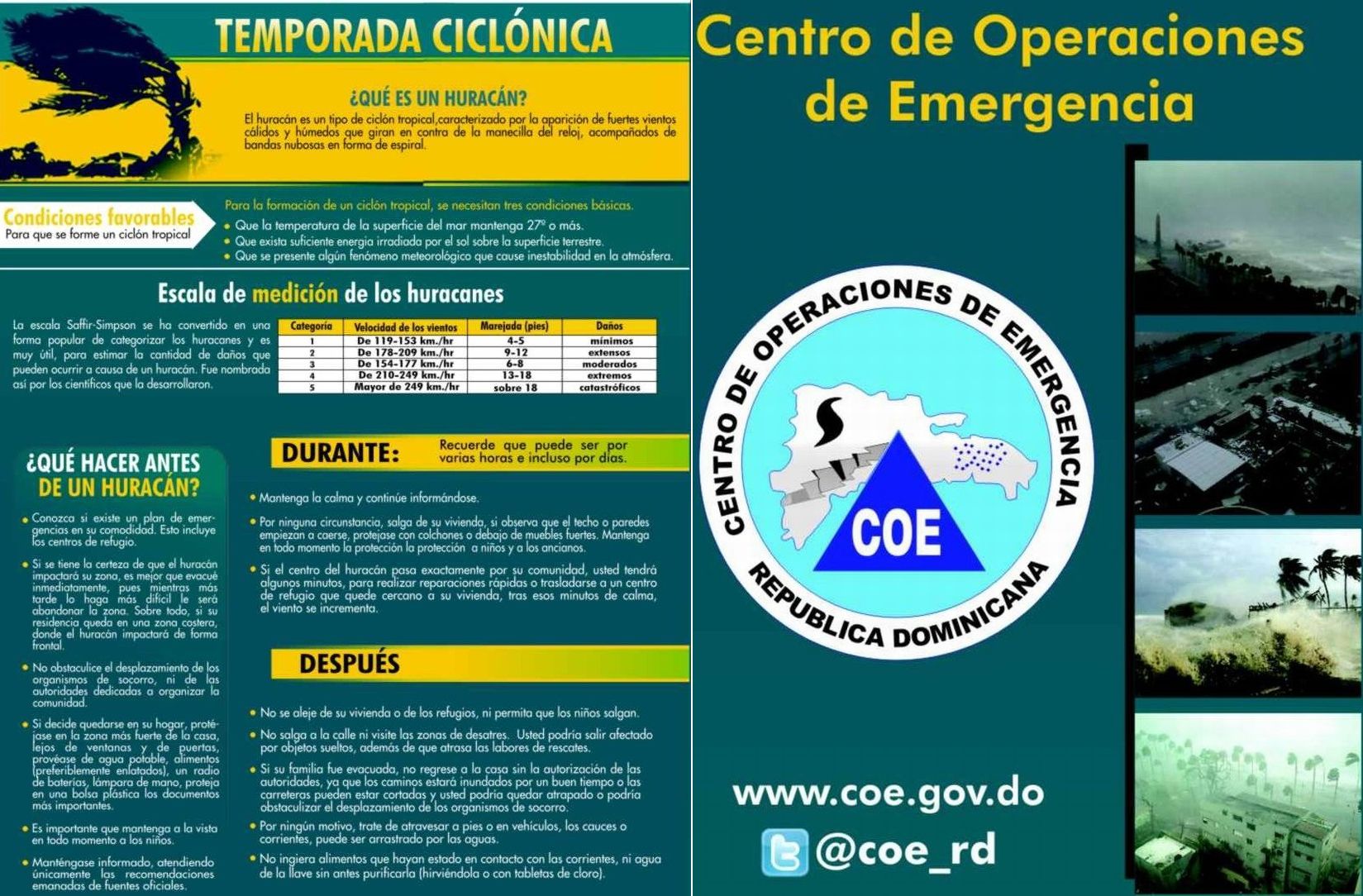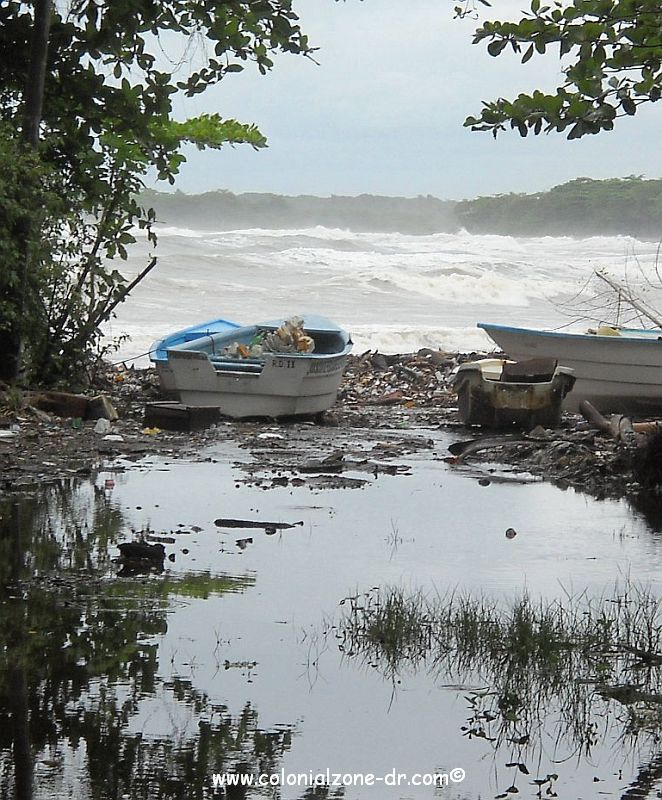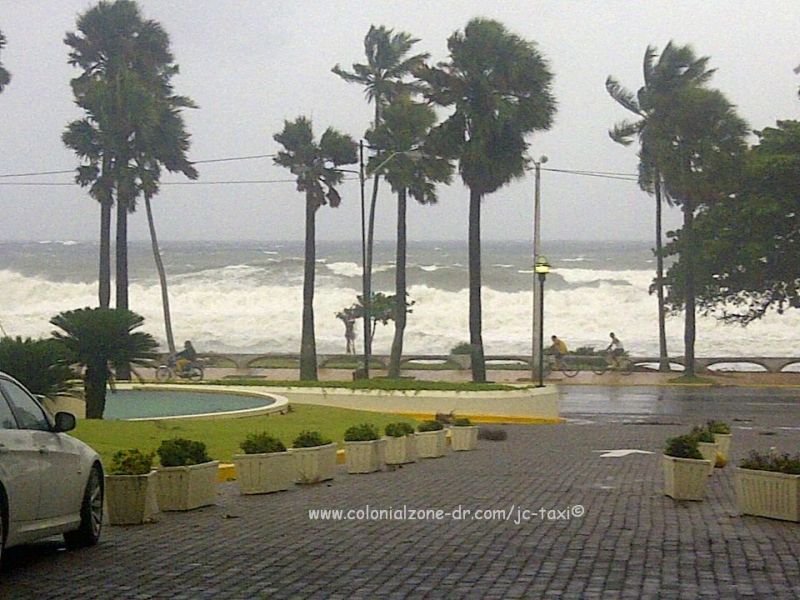If you found my web site useful consider making a donation through Pay Pal.
Thanks!

|
|
Gracias a coinmill.com


Dominican Republic Hurricanes, Cyclones, and Tropical Storms
Home | Dining & Night Life | Hotel | Sights | Pictures | Music | Colonial Zone Map | Hot Spots! Directory | Site Search
site map Copyright © 2005 - 2016 All Rights Reserved. Colonial Zone-Dominican Republic (DR)
Our complete exchange rate tool.
Home | Calendar | Night Life/Dining | Sight Seeing | Pictures | Businesses | Artists | Food | Helps | History | Language | Music | Media | Pastimes | Products | Tradition/Legend | Links | About Us | Buy Mamajuana | News Blog | DR Gringa's Life Blog | Dominican Dog Blog
Hurricane, Cyclone and Tropical Storm Information for Dominican Republic
The hurricane season in the Caribbean begins on June 1st and finishes in November. In Dominican Republic the most active months months for a cyclone is usually mid August through September. The island gets a serious brush on average every 5.03 years. It is averaged that we get a direct hit once every 22.66 years.
We have had 22 hurricanes that have impacted the coast from 1871 to 2004 of which 5 were very devastating.
September 3, 1930: Huracán San Zenón (4,500 (some accounts say more than 8,000) lives lost. This was one of the top five most devastating Caribbean cyclones) ; October 3, 1963: Huracán Flora (400 lives lost) ;September 26, 1966: Huracán Inés (60 lives lost); August 31, 1979: Huracán David (1,000+ lives lost) ; September 22, 1988: Huracán Georges (247 lives lost)
+click image to enlarge
Huracán San Zenón (there are a few more pictures of the Hurricane in the old pictures collection - pictures 72,73 and 74)
Hurricane / Huracán, Cyclone / Ciclónica, Tropical Storm / Tormenta Tropical
A hurricane is a type of tropical cyclone, the general term for all circulating weather systems over tropical waters. The hurricane moves counterclockwise in the Northern Hemisphere.
*Tropical Disturbance, Tropical Wave is a random mass of thunderstorms, very little, if any, organized wind circulation.
*Tropical Depression is an organized system of clouds and thunderstorms with a defined circulation and maximum sustained winds of below 39 mph (34 knots) or less.
*A Tropical Storm is an organized system of strong thunderstorms with a defined circulation and maximum sustained winds of 39 to 73 mph (34-63 knots).
*A Hurricane is an intense tropical weather system with a well defined circulation and maximum sustained winds of 74 mph (64 knots) or higher. The hurricane is categorized from 1(weakest) to 5 (strongest).
*Category 1 winds measure between 74 and 95 mph..(64-82 knots)
*Category 2 winds measure between 96 and 110 mph (83-95 knots)
*Category 3 winds measure between 111 and 130 mph. (96-113 knots)
*Category 4 sustainable winds between 131 and 155 mph. (114-135 knots)
*Category 5 Sustainable winds over 155 mph.(135 knots and above)
Many hurricanes do weaken when and if they hit Dominican Republic because of its rough terrain. But if a hurricane or Tropical storm does hit it is very devastating to the coastal areas. The obvious wind is a problem but also the rain. In the interior of the island heavy rainfall can cause mudslides and serious problems with the roads being water covered.
What To Do Incase Of a Hurricane
If you are not in a major hotel or are living on the island and there is a hurricane threat here are a few things to do. Please be prepared in advance. There are many web sites with complete lists on how to prepare. This is a short list of what to do so you can be prepared.
*Know the evacuation routes or know someone that knows the routes.
*Bring in things from the outside that can blow around. Anchor objects that cannot be brought inside.
*Secure windows with shutters, boards or tape.
*Stay inside, away from windows, skylights and glass doors.
*Keep a door or window open on the opposite side of the force of the wind to avoid a build up of pressure that will suck your roof off.
*Fill up the gasoline tanks of all your cars
*Fill baths and clean containers with water. Only drink water after it has been boiled for at least 5 minutes or after bleach has been added (eight drops/gallon) or use a water purifier.
If you live on the island try and have a good plastic tote box filled with necessities just in case the worse happens.
*Food that doesn't need to be cooked. Medicines.
*Basic utensils and can opener.
*Soaps and bathroom supplies.
*First aid supplies. Personal information.
*Flashlights, matches, candles and batteries.
*Sleeping gear.
*Camping stove and fuel.
*Clothing and rain gear.
*Some basic tools.
*Water.
*Whatever else you may need to live for a time to make it a bit more comfortable like a book or magazine.
+click to enlarge - Pamphlet put out by the Emergency Center in DR. It is a large file. Please click to open and read (in Spanish). Feel free to save it for reference.
Make sure if you do decide to leave your home that you give yourself plenty of time. Do so by heading inland until the storm has passed. The Dominican Republic Emergency Operations Center / Centro de Operaciones de Emergencias (COE) (checking their web site click on ALERTAS) announces that your area is an evacuation area, it will tell you where the shelters are located and you should go immediately.
*Remember you cannot take animals, alcohol, or firearms into a shelter. More information about securing your pet incase of a hurricane on the Dominican Dog Blog.
Legend has it that former President Joaquín Balaguer made a pact with The Virgen de la Altagracia (who is Altagracia?) so the country would not have any large hurricanes...read more on the Myths and Legends page.
+click image to enlarge
Flooding on Playa Cocolindo after Hurricane Sandy passed Dominican Republic October 2012
WARNINGS:
*HURRICANE WATCH means there is a possibility that you could experience hurricane conditions within 36 hours.
You need to prepare just to be safe. Secure the boat, make sure you have all the items in ready for securing your home and belongings. Better to be safe than sorry.
*HURRICANE WARNING means that sustained winds of at least 74 mph are expected within 24 hours or less.
If this warning has been issued people should be actively preparing for the storm. Also deciding the safest location to be during the storm.
The hurricane season in Dominican Republic usually lasts from the beginning of June to the end of November, with August and September being the months of greatest storm activity. The hotels and resorts are usually prepared incase one does strike while you are here. They will tell you what is best and evacuate you to another place if they see it is needed. In general, the island is prepared for these storms and the tourists are usually taken care of. If a hurricane has hit and you are to be vacationing here just call ahead and make sure all is still ready for your arrival.
Many of the buildings in Dominican Republic are made from blocks, cement, iron rods, sand and gravel. These materials are generally weather-resistant. There are also many buildings with tin roofs that can become deadly when they become dislodged. Also watch out for flying coconuts.
A large hurricane named Georges hit Dominican Republic on September 22, 1998. It was a category 3. The one before that was hurricane David in 1979. This was a category 5. Thus, the likelihood of getting caught in a hurricane is very small. But when a hurricane does strike there is a good chance there will be destruction. The threat of a possible approaching hurricane should always be taken seriously and all necessary precautions should be taken
+click image to enlarge
The smaller Hurricane Issac as seen form the Malecon, Santo Domingo in front of the Jaragua Hotel
*Make sure your propane gas tank supply is good and shut off at the time of the storm.
*Turn off electricity mains and propane tanks.
*Do not light candles or lighters until you are sure there is no escaped gas fumes close by.
*Make sure to have money because banks and ATMs may be temporarily shut down.
*Stay in a room without windows (bathroom, closet) if you are staying in your home.
*Do not use the telephone except for emergencies
*If the eye of the storm happens to pass over your area, make sure not to venture outside, as the ferocious back end of the hurricane is still to follow. You should also be very careful what you do after a hurricane has passed. People are frequently killed after hurricanes due to electric shocks from fallen wires or lacerations
Continue on to Hurricanes Page 2 - Hurricane Satellite Water Vapor - Cloud Cover Maps In Real Time and Important Links
[TOP]
[TOP]

[TOP]
The National Weather Service, National Oceanic and Atmospheric Administration (NOAA) published a guide to help all be prepared in case of a Tropical Storm. It is a very complete and informative.

Custom Search
Learn English, French, Spanish, Japanese, and more on line when you have time. Be part of a global language learning community.
